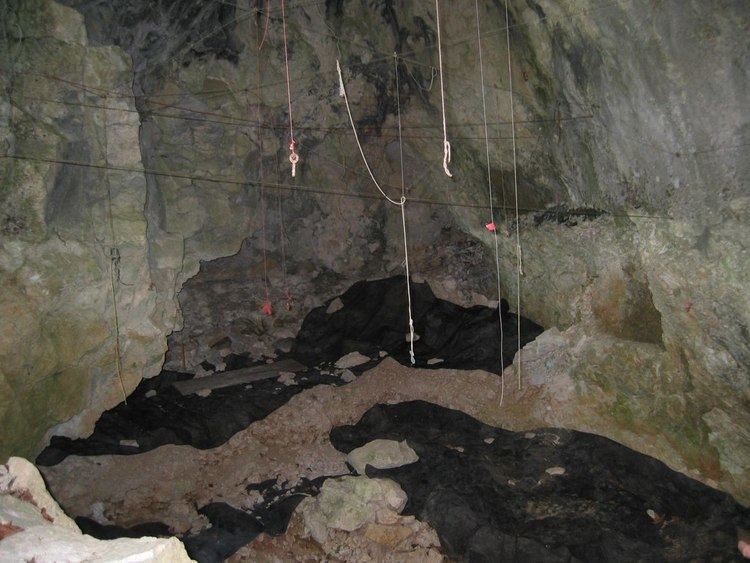Location Blaubeuren Material limestone Karst | Type karst cave Cultures Aurignacian | |
 | ||
Region Ach Valley, Swabian Jura, Baden-Württemberg, Germany Periods Upper Palaeolithic to Middle Ages Address Bruckfelsstraße 20, 89143 Blaubeuren, Germany Similar Hohle Fels, Pettakere cave, Las Caldas cave, Jebel Irhoud, Abrigo del Pez | ||
Geisenklösterle (German: 'Geißenklösterle') is an archaeological site of significance for the central European Upper Paleolithic, located near the town of Blaubeuren in the Swabian Jura in Baden-Württemberg, southern Germany.
Contents
Overview
It is one of a number of caves where early modern humans in the Aurignacian, between 43,000 and 30,000 years ago left traces of early artwork, including the Vogelherd, Brillenhöhle, Grosse Grotte, Hohle Fels and Hohlenstein-Stadel caves.
Geisenklösterle was first archaeologically explored in 1963. Systematic excavations began in 1973, from 1974 to 2002 sponsored by the State of Baden-Württemberg. A 1983 monographic publication summarizes the excavation results up to that time.
The cave contains sediments, that were divided into six levels belonging to the Aurignacian and seven levels of the Gravettian. Levels below are accredited to the Middle Paleolithic and those on top reach from the Western European Magdalenian (between 17,000 and 12,000 years ago) to the Middle Ages.
The Aurignacian levels date to between 43,000 and 32,000 years ago, and yielded stone tools, artefacts made from antlers, bones and ivory. Among the most notable items are a sculpture of a flutes of bird bone and mammoth ivory, the oldest known musical instruments with an age of 42,000 to 43,000 years.
UNESCO world heritage application
In January 2016, the federal government of Germany applied for the status of World Heritage Site for two valleys with six caves named Höhlen der ältesten Eiszeitkunst ("Caves with the oldest Ice Age art"). The site would encompass areas in the Lonetal (valley of the Lone) and the Achtal (valley of the Ach) both in the southern Swabian Jura. The former includes the caves Hohlenstein-Stadel, Vogelherd and Bocksteinhöhle, the latter Geisenklösterle, Hohle Fels and Sirgensteinhöhle. Each valley would contain a core area of around 3 to 4 km length, surrounded by a buffer zone of a least 100 m width.
In the argument why these sites deserve recognition as a part of the universal human heritage, the area is described as the source of the currently oldest (non-stationary) works of human art in the form of carved animal and humanoid figurines as well as the oldest musical instruments. Their creators lived, were inspired and worked in and around these caves. The caves also served as the repositories of the figurines which may have been used in a religious context. In addition, they were the venue where performers used the excavated musical instruments and where the social groups lived from which the artists sprang.
A decision by the committee is expected in July 2017.
